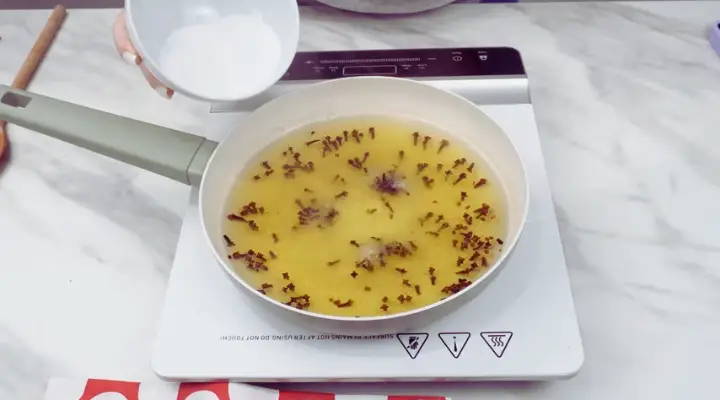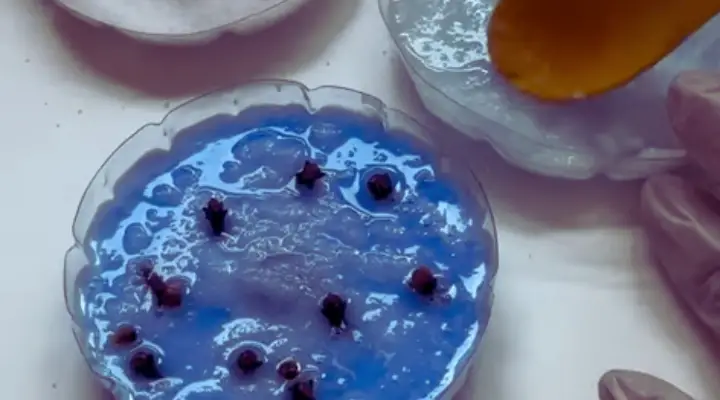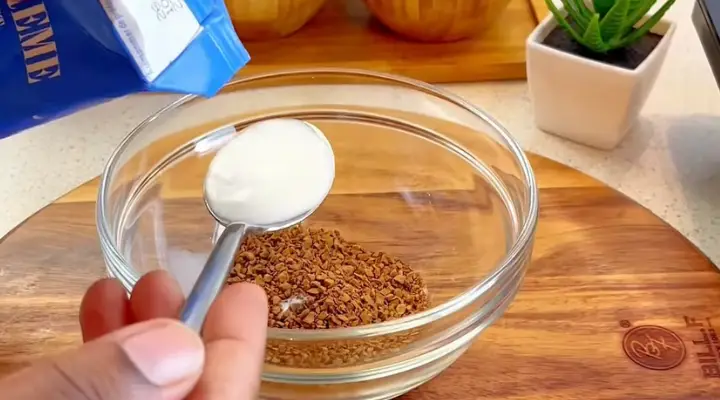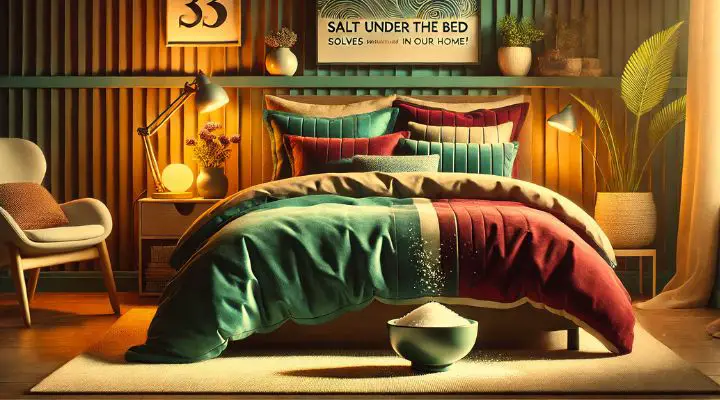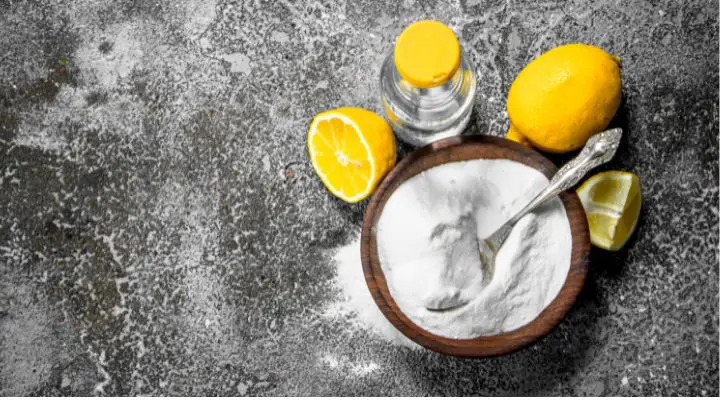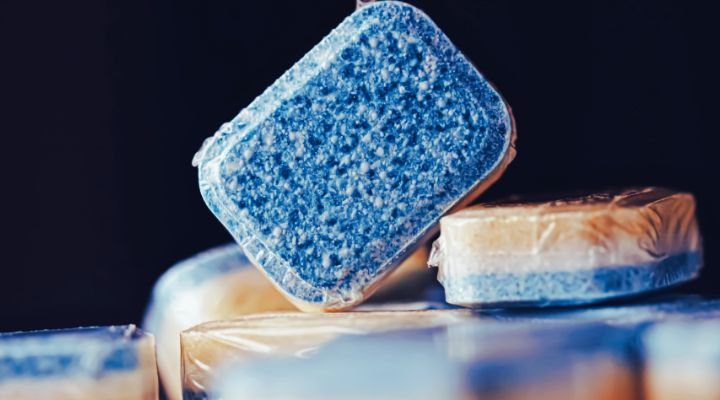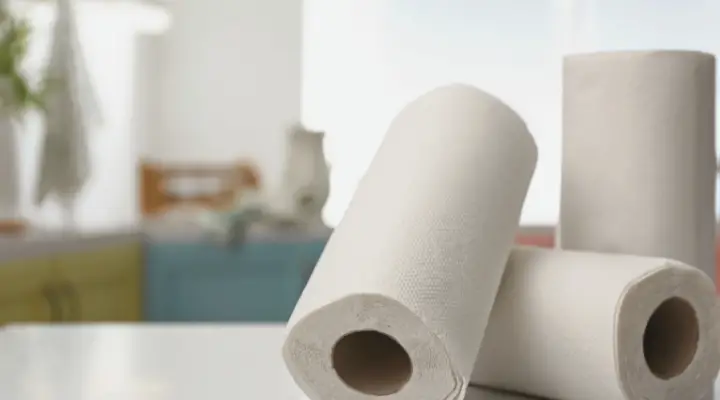Home fragrance mold removal it’s not exactly the topic you *want* to be thinking about, is it? But trust me, if you’ve noticed a musty smell lingering around your favorite diffuser or candle, or even worse, visible mold growth, addressing it quickly is crucial for your health and the air quality of your home.
For centuries, humans have sought ways to enhance their living spaces with pleasant scents. From burning incense in ancient temples to the modern-day explosion of diffusers and scented candles, fragrance has always played a role in creating a comfortable and inviting atmosphere. However, the humid environments often created by these products, combined with dust and organic matter, can unfortunately create the perfect breeding ground for mold. Ignoring this issue can lead to respiratory problems, allergies, and a generally unhealthy living environment.
I know, I know, dealing with mold isn’t fun. But the truth is, understanding how to tackle home fragrance mold removal effectively is an essential part of maintaining a healthy home. We all deserve to breathe clean air and enjoy our favorite scents without worrying about the hidden dangers of mold. In this article, we’ll explore the common causes of mold growth in relation to home fragrances, provide practical tips for prevention, and guide you through safe and effective removal methods. Let’s get started and reclaim your fresh, healthy home!
`
Home Fragrance Mold Removal: A Comprehensive Guide
Hey there! Mold in your home, especially around those lovely home fragrances, can be a real bummer. Not only does it look and smell unpleasant, but it can also trigger allergies and other health issues. Don’t worry, though! I’m here to guide you through the process of identifying, removing, and preventing mold growth associated with your favorite home scents. Let’s get started!
Identifying Mold Around Home Fragrances
First things first, we need to figure out if we’re actually dealing with mold. Here’s what to look for:
* Visual Signs: Keep an eye out for fuzzy or slimy patches. Mold can be black, green, white, brown, or even pink. It often appears in damp or poorly ventilated areas.
* Musty Odor: That distinctive musty smell is a telltale sign of mold. If you notice it near your diffusers, candles, or potpourri, investigate further.
* Common Locations: Check these spots carefully:
* Around the base of diffusers (especially if they leak).
* On or near candle wax (especially if the candle is old or stored improperly).
* Inside potpourri containers (especially if the potpourri is damp).
* On walls or surfaces near where you store your home fragrances.
* In humid areas like bathrooms where you might use scented products.
Safety First!
Before we dive into the cleaning process, let’s talk safety. Mold can be irritating, so it’s important to protect yourself:
* Ventilation: Open windows and doors to ensure good airflow. This will help to dry out the area and prevent mold spores from spreading.
* Protective Gear: Wear gloves (rubber or disposable), a mask (N-95 or higher), and eye protection (goggles) to avoid direct contact with mold and spores.
* Keep Others Safe: Keep children and pets away from the affected area during cleaning.
Cleaning Mold: Step-by-Step Instructions
Okay, now for the main event! Here’s how to tackle that mold:
Section 1: Cleaning Hard Surfaces (Diffuser Bases, Candle Holders, etc.)
1. Gather Your Supplies: You’ll need:
* White vinegar or a mold-killing cleaning solution (available at most hardware stores).
* Spray bottle.
* Scrub brush or sponge.
* Clean cloths or paper towels.
* Water.
2. Prepare the Cleaning Solution:
* For vinegar: Pour undiluted white vinegar into a spray bottle. Vinegar is a natural disinfectant and effective mold killer.
* For commercial cleaner: Follow the manufacturer’s instructions for dilution and application.
3. Spray the Affected Area: Thoroughly spray the moldy surface with your chosen cleaning solution. Make sure to saturate the area.
4. Let it Sit: Allow the solution to sit for at least 10-15 minutes. This gives it time to penetrate and kill the mold.
5. Scrub the Surface: Use a scrub brush or sponge to vigorously scrub the moldy area. Apply firm pressure to remove the mold.
6. Rinse (If Necessary): If you used a commercial cleaner, rinse the surface with clean water. Vinegar doesn’t usually require rinsing, but you can if you prefer.
7. Dry Thoroughly: Use clean cloths or paper towels to dry the surface completely. Mold thrives in damp environments, so this step is crucial.
8. Inspect and Repeat: Check the area for any remaining mold. If necessary, repeat steps 3-7.
Section 2: Cleaning Porous Surfaces (Walls, Fabrics Near Fragrances)
Cleaning mold on porous surfaces like walls or fabrics requires a slightly different approach.
1. Gather Your Supplies: You’ll need:
* White vinegar or a mold-killing cleaning solution.
* Spray bottle.
* Soft brush or sponge.
* Clean cloths or paper towels.
* Vacuum cleaner with a HEPA filter (highly recommended).
* Water (for rinsing, if necessary).
2. Prepare the Cleaning Solution: Same as above undiluted white vinegar or a diluted commercial cleaner.
3. Spray the Affected Area: Lightly spray the moldy surface. Avoid oversaturating the area, especially on walls, as this can worsen the problem.
4. Let it Sit: Allow the solution to sit for 5-10 minutes.
5. Gently Scrub: Use a soft brush or sponge to gently scrub the moldy area. Avoid applying too much pressure, as this can damage the surface.
6. Blot with a Clean Cloth: Use a clean cloth or paper towel to blot the area, removing as much moisture and mold as possible.
7. Vacuum (HEPA Filter Required): Once the area is dry, vacuum it thoroughly with a vacuum cleaner equipped with a HEPA filter. This will help to remove any remaining mold spores.
8. Inspect and Repeat: Check the area for any remaining mold. If necessary, repeat steps 3-7. For fabrics, consider professional cleaning if the mold is extensive.
Section 3: Dealing with Candles and Potpourri
Sometimes, the mold is actually *on* the candle wax or *inside* the potpourri.
1. Candles:
* If the mold is only on the surface of the wax, you can carefully scrape it off with a spoon or knife. Be sure to dispose of the moldy wax properly.
* If the mold is deep within the wax, it’s best to discard the candle. Burning a moldy candle can release mold spores into the air.
2. Potpourri:
* If the mold is only on a few pieces of potpourri, you can try removing and discarding them.
* If the mold is widespread, it’s best to discard the entire potpourri mixture.
* Thoroughly clean the container the potpourri was in using the steps outlined in Section 1.
Preventing Future Mold Growth
Now that you’ve tackled the mold, let’s make sure it doesn’t come back! Here are some tips:
* Control Humidity: Mold thrives in damp environments. Use a dehumidifier in humid areas like bathrooms and basements. Aim for a humidity level below 60%.
* Improve Ventilation: Ensure good airflow in your home. Open windows regularly, especially after showering or cooking. Use exhaust fans in bathrooms and kitchens.
* Proper Storage: Store home fragrances in a cool, dry place. Avoid storing them in damp or humid areas.
* Clean Regularly: Regularly clean around your diffusers, candles, and potpourri to remove any dust or spills that could contribute to mold growth.
* Inspect Regularly: Periodically inspect your home for signs of mold, especially in areas where you use home fragrances. Catching it early makes it much easier to deal with.
* Consider Mold-Resistant Products: When purchasing home fragrances, look for products that are less likely to promote mold growth. For example, some diffusers are designed to minimize leaks.
* Essential Oil Diffusers: Clean your essential oil diffusers regularly according to the manufacturer’s instructions. Residue buildup can create a breeding ground for mold.
* Candle Care: Trim candle wicks before each use to prevent soot buildup, which can contribute to mold growth. Avoid burning candles for extended periods of time, as this can create excess moisture.
* Potpourri Maintenance: Refresh potpourri regularly and discard any damp or moldy pieces. Consider using a desiccant packet in the potpourri container to absorb excess moisture.
* Address Leaks Promptly: Fix any leaks in your home immediately. Even small leaks can create a damp environment that promotes mold growth.
When to Call a Professional
While you can often handle small mold problems yourself, there are times when it’s best to call in a professional mold remediation company:
* Large Areas: If the mold covers a large area (more than 10 square feet).
* Hidden Mold: If you suspect mold is growing behind walls or in other hidden areas.
* Health Concerns: If you or someone in your family is experiencing health problems that you suspect are related to mold exposure.
* Persistent Mold: If you’ve tried cleaning the mold yourself and it keeps coming back.
Final Thoughts
Dealing with mold can be a bit of a hassle, but by following these steps, you can effectively remove it and prevent it from returning. Remember to prioritize safety, be thorough in your cleaning, and take steps to control humidity and improve ventilation. With a little effort, you can keep your home smelling fresh and clean without the worry of mold! Good luck!
“`
Conclusion
In conclusion, addressing home fragrance mold removal is not merely a cosmetic fix; it’s a crucial step towards safeguarding your health and well-being. The insidious nature of mold, particularly when exacerbated by the humid conditions often created by home fragrance diffusers and humidifiers, can lead to a cascade of health problems, ranging from mild allergies to severe respiratory issues. Ignoring this issue is akin to allowing a silent threat to fester within your living space.
This isn’t about abandoning the joy of a beautifully scented home. Instead, it’s about adopting a proactive and informed approach to maintaining a healthy indoor environment. Think of it as an investment in your long-term health and the health of your loved ones. The peace of mind that comes from knowing your home is free from harmful mold spores is invaluable.
We’ve explored various methods for tackling home fragrance mold removal, from simple DIY solutions using readily available ingredients like vinegar and baking soda to more advanced techniques involving specialized cleaning products and professional mold remediation services. The best approach for you will depend on the severity of the mold infestation and your personal comfort level.
Consider these variations and suggestions:
* Preventative Measures: Before you even detect mold, implement preventative strategies. Ensure adequate ventilation in areas where you use home fragrance products. Regularly clean diffusers and humidifiers according to the manufacturer’s instructions. Monitor humidity levels and consider using a dehumidifier in damp environments.
* Natural Alternatives: If you’re concerned about the harsh chemicals in commercial mold removers, explore natural alternatives like tea tree oil or grapefruit seed extract. These options offer potent antifungal properties without the potentially harmful side effects.
* Professional Assessment: For extensive mold infestations, don’t hesitate to seek professional help. Mold remediation experts have the knowledge, equipment, and experience to safely and effectively remove mold and prevent its recurrence. They can also identify the underlying causes of the mold growth and recommend solutions to address them.
* Air Quality Testing: After completing the mold removal process, consider conducting an air quality test to ensure that the air in your home is safe to breathe. This will provide you with peace of mind and confirm that the mold has been effectively eliminated.
We strongly encourage you to take action today to address any potential mold issues in your home. Don’t wait until health problems arise. A proactive approach to home fragrance mold removal is the key to maintaining a healthy and happy living environment.
Finally, we invite you to share your experiences with home fragrance mold removal. What methods have you found most effective? What challenges have you encountered? Your insights can help others navigate this important issue and create healthier homes for themselves and their families. Share your stories in the comments below! Let’s learn from each other and create a community dedicated to healthy living.
Frequently Asked Questions (FAQs)
What exactly is mold, and why is it a problem in my home?
Mold is a type of fungus that thrives in damp, humid environments. It reproduces through tiny spores that float in the air. When these spores land on a surface with moisture, they can begin to grow and form colonies. In homes, mold can grow on walls, ceilings, floors, and other surfaces, especially in areas with poor ventilation or water leaks. Mold is a problem because it can trigger allergic reactions, respiratory problems, and other health issues. Some types of mold, such as black mold (Stachybotrys chartarum), can produce toxins that are particularly harmful to human health.
How do home fragrance products contribute to mold growth?
Home fragrance products, such as diffusers and humidifiers, can increase the humidity levels in your home. This creates a more favorable environment for mold growth. Diffusers release moisture into the air, which can condense on surfaces and provide a breeding ground for mold. Humidifiers, by design, add moisture to the air, and if not properly maintained, they can become breeding grounds for mold themselves, spreading spores throughout your home. Even scented candles, while not directly increasing humidity, can contribute to the problem if they are burned in poorly ventilated areas, as the soot and residue can provide a surface for mold to grow on.
How can I tell if I have mold in my home, especially related to home fragrance use?
Several signs can indicate the presence of mold in your home:
* Visible Mold: The most obvious sign is seeing mold growth on surfaces. Mold can appear in various colors, including black, green, brown, or white.
* Musty Odor: A persistent musty or earthy odor is a strong indicator of mold, even if you can’t see it.
* Water Stains: Water stains on walls, ceilings, or floors can indicate a leak or moisture problem that could be fostering mold growth.
* Allergic Symptoms: If you experience unexplained allergy symptoms, such as sneezing, coughing, runny nose, itchy eyes, or skin rashes, especially when you’re at home, mold could be the culprit.
* Condensation: Excessive condensation on windows or walls can create a damp environment that promotes mold growth.
* Check around diffusers and humidifiers: Pay close attention to the areas surrounding your diffusers and humidifiers. Look for discoloration, dampness, or a musty smell.
What are some DIY methods for home fragrance mold removal?
Several DIY methods can be effective for removing mold from small areas:
* Vinegar: White vinegar is a natural disinfectant and mold killer. Spray undiluted vinegar onto the affected area, let it sit for an hour, and then wipe it clean.
* Baking Soda: Baking soda is a mild abrasive and deodorizer. Mix baking soda with water to form a paste, apply it to the moldy area, let it dry, and then scrub it off.
* Hydrogen Peroxide: Hydrogen peroxide is an effective mold killer and disinfectant. Spray a 3% solution of hydrogen peroxide onto the moldy area, let it sit for 10 minutes, and then scrub it clean.
* Tea Tree Oil: Tea tree oil is a natural antifungal agent. Mix a few drops of tea tree oil with water in a spray bottle, spray it onto the moldy area, and let it air dry. Do not rinse.
When should I call a professional mold remediation service?
You should consider calling a professional mold remediation service in the following situations:
* Large Mold Infestations: If the mold covers a large area (more than 10 square feet), it’s best to leave the removal to professionals.
* Hidden Mold: If you suspect mold is growing behind walls or in other inaccessible areas, professionals have the tools and expertise to locate and remove it.
* Health Concerns: If you or someone in your household has health problems related to mold exposure, it’s important to have the mold professionally removed.
* Recurring Mold: If you’ve tried to remove the mold yourself, but it keeps coming back, a professional can identify and address the underlying cause of the mold growth.
* Black Mold: If you suspect you have black mold (Stachybotrys chartarum), it’s crucial to have it professionally removed, as it can be particularly harmful.
How can I prevent mold from growing in my home in the future, especially when using home fragrance products?
Preventing mold growth is key to maintaining a healthy home environment. Here are some tips:
* Control Humidity: Keep humidity levels in your home below 60%. Use a dehumidifier in damp areas, such as bathrooms and basements.
* Ventilation: Ensure adequate ventilation in your home, especially in bathrooms and kitchens. Use exhaust fans when showering or cooking.
* Fix Leaks: Repair any water leaks promptly to prevent moisture buildup.
* Clean Regularly: Clean your home regularly to remove dust and debris that can provide a food source for mold.
* Properly Maintain Diffusers and Humidifiers: Clean diffusers and humidifiers regularly according to the manufacturer’s instructions. Empty and dry them when not in use. Consider using distilled water in humidifiers to minimize mineral buildup.
* Use Mold-Resistant Products: When renovating or building, use mold-resistant drywall and paint.
* Monitor for Condensation: Keep an eye out for condensation on windows and walls, and wipe it away promptly.
* Consider Air Purifiers: Air purifiers with HEPA filters can help remove mold spores from the air.
* Be Mindful of Home Fragrance Usage: While enjoying home fragrances, be mindful of the potential for increased humidity. Use them in moderation and ensure proper ventilation.
* Regular Inspections: Conduct regular inspections of your home for signs of mold, especially in areas prone to moisture.
By taking these preventative measures, you can significantly reduce the risk of mold growth in your home and maintain a healthy living environment. Remember that proactive home fragrance mold removal is an ongoing process, not a one-time fix.

